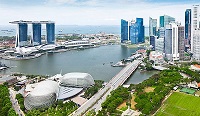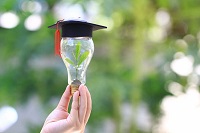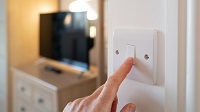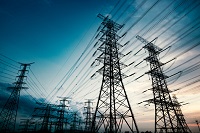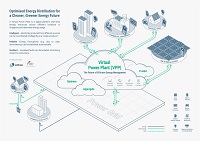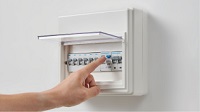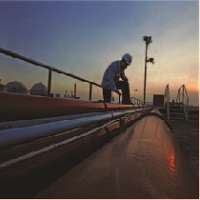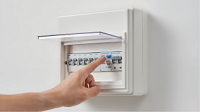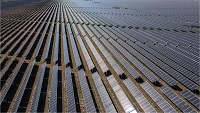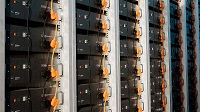Whether in the bedroom or in the living room, consider switching to LED lights for a more energy-efficient option. Compared to traditional bulbs, LED light bulbs can last up to 25 times longer. This means fewer replacements over the years, saving not just energy but time and money as well!
Every year on 21 October, World Energy Saving Day encourages us to rethink the way we use energy and to make choices that can reduce our carbon footprint on the planet.
In Singapore, Energy Market Authority (EMA) is working to secure a cleaner, more reliable and resilient energy supply for the nation. Guided by the Four Switches – solar energy, regional power grids, low-carbon alternatives, and natural gas – we are building sustainable and efficient energy markets while ensuring energy security and cost-competitiveness for all.
We all have a part to play in saving energy. By adopting simple habits, we can reduce carbon emissions, ease the demand on our power system, and even lower our own electricity bills.
Here are some easy steps to get started at home.
Unplug and Unwind in the Living Room or Bedroom
#1: Switch to LED Lights
#2: Raise the Temperature
You do not need to turn off the air-conditioning – just try raising the temperature! Studies show that going from 22 degrees Celsius to 25 degrees Celsius can save up to 34 per cent energy savings and reduce carbon emissions by 30 per cent. Interestingly, 25 degrees Celsius may also be the sweet spot for staying comfortable and productive. Any cooler, and your body have to work harder to stay warm, leaving you with less energy for your tasks.
Worried it might be still warm? Try hybrid cooling: Set the air-conditioning at a higher temperature and use a fan to circulate the cooler air. It is a simple tweak that is good for the planet and your comfort!
“This will be one of the first advanced closed-loop geothermal systems of its kind to be constructed. Projects like this can usually take up to several years to develop, so the idea of geothermal energy plants becoming a reality in our lifetime is certainly not out of the question,” Clarence said.
#3: Unplug Unused Devices
Did you know that many electronic devices continue to use electricity even when they are turned off? This is called the “phantom load”. Devices still draw power to perform updates, stay connected to remote servers, or maintain standby mode.
By switching off your devices at the power socket, you will save energy and may get to lower your electricity bills over time as well. Also worth noting is that appliances with heating elements can be a fire risk when left plugged in. So switching off these appliances at the power socket gives you extra peace of mind!
Cook Up Energy Savings in the Kitchen
#4: Save Energy with the Right Appliance
Saving energy is not just about using energy-efficient appliances with more ticks. Your cooking habits can make a big difference too.
Try using glass or ceramic dishes in the oven, as they retain heat better than metal and help cook food more efficiently. Match the pan size to the amount of food you are cooking, and boil water in the kettle before adding it to your pots to use only the heat you need. Finally, cover your pots with a lid whenever possible to keep heat in and cook food faster.
Loads of Energy Savings with Laundry
#5: Maximise Your Loads
Washing machines use the same amount of energy whether the load is full or partially full. That means it is much more energy-efficient to wash full loads whenever possible. Doing this also means doing laundry less often, which saves energy and electricity costs.
#6: Use Cold Water
Most of a washing machine’s energy goes into heating water. It is estimated that washing clothes in cold water instead can reduce energy usage by as much as up to 90 per cent. As a bonus, cold water is gentler on clothes, helping to preserve their colour and quality.
#7: Air-dry Your Clothes
Dryers are known to consume a lot of energy, and with Singapore’s sunny weather, you often do not need one. Air-dry your clothes on a rack or on clothesline instead. If you need the load to dry faster, use a higher spin cycle in the washing machine or switch on a fan in the drying area. Besides saving electricity, air drying can prevent your clothes from shrinking or being damaged.
Ease Off on the Heat in the Showers
#8: Take Shorter Showers
Taking shorter showers mean less water usage, and reduces the energy needed to heat water. Every minute makes a difference and over time, these small changes can lead to noticeable savings on your utility bills.
#9: Remember to turn off the water heater
Water heaters, like the refrigerators and air conditioning, are one of the most energy-intensive appliances in most homes. Leaving them on after use makes the heater work continuously to reheat water which not only drives up energy use and electricity bills but can also be a fire hazard.
#10: Skip the hot shower
In our humid weather, it might be more comfortable to skip the hot shower entirely. Besides saving on water heating costs, you can also benefit from improved circulation, reduced muscle soreness and better mood when you shower in cold water on a hot day.
Every Watt Counts!
This World Energy Saving Day, remember: every switch you turn off, every full laundry load you run, and every idle device you unplug adds up. Small actions today mean lower bills low, a greener planet happy and a brighter energy future for Singapore.
Together with EMA’s Four Switches strategy, each small step helps move Singapore closer to a cleaner and more sustainable energy future.
